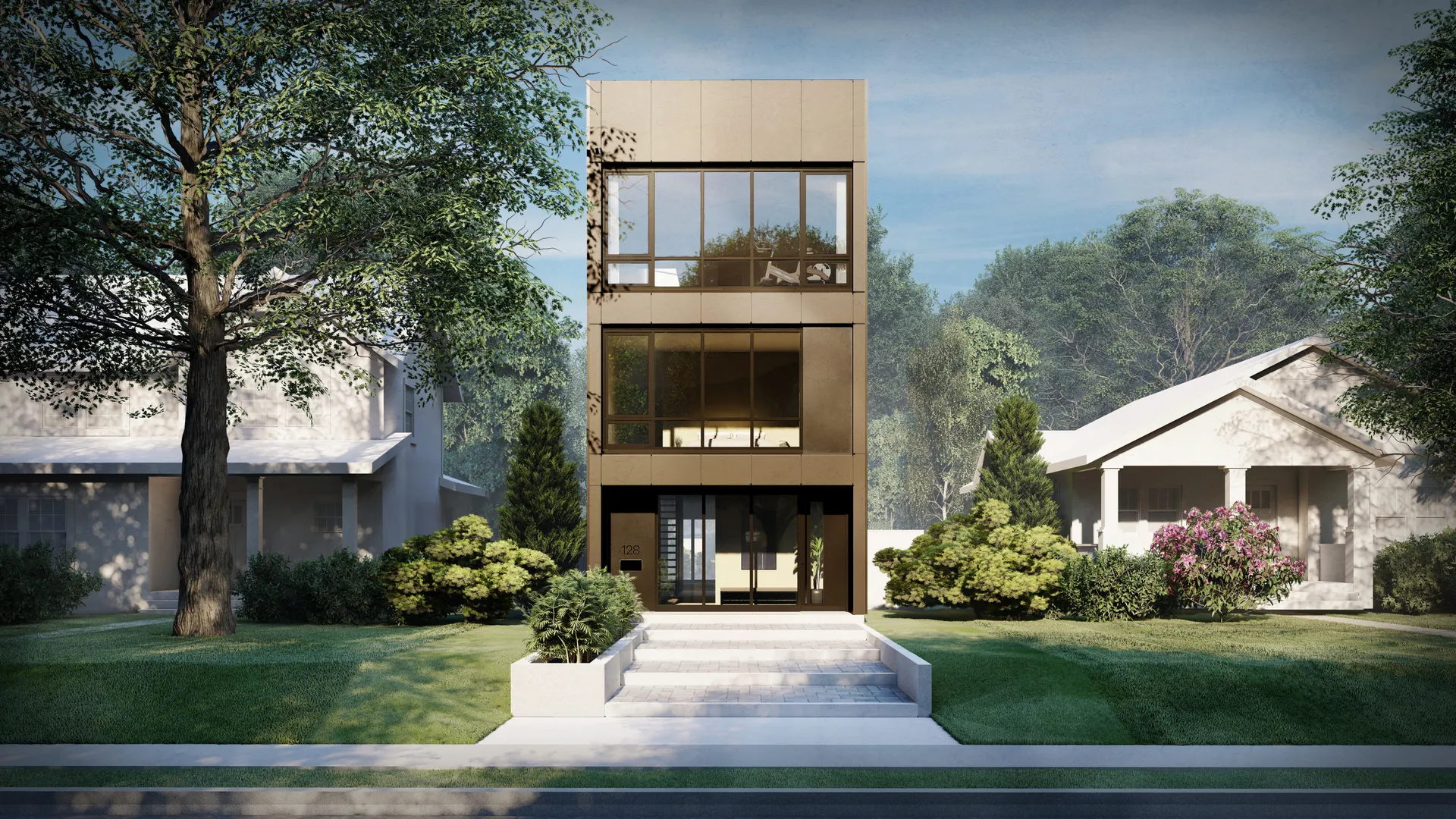The Historical Context for the Main Features of Modern Architectural Styles
Architecture in many ways holds up a mirror to society, reflecting the cultural, technological, and societal norms of place and time. As norms shift and change across time, architecture shifts and changes right alongside.
Modern architecture is no different. The main features of the modern architectural style arose in the early 20th century - a period of intense change in society in North America and Western Europe.
Industrialization not only resulted in the creation of new building materials and mechanization of manufacturing functions, but also led to rapid urbanization and a need for new housing.
World War I and the end of the war led to economic change and a rise in idealistic and utopian visions of society. These visions were reflected in both art and architecture, fueled by a belief in the power of art and design to shape and improve human behavior. Architects like Le Corbusier envisioned radiant cities where architecture played a pivotal role in creating harmonious, organized, and efficient societies.
Many architects felt that traditional architectural styles did not reflect the society of this new “modern era”, resulting in a reaction against the ornateness of proceeding architectural styles like Baroque and Victorian. This shift was facilitated by new building technologies (such as drywall) and innovative construction techniques.
It was within this historical context that the minimalist modern architecture style was born.
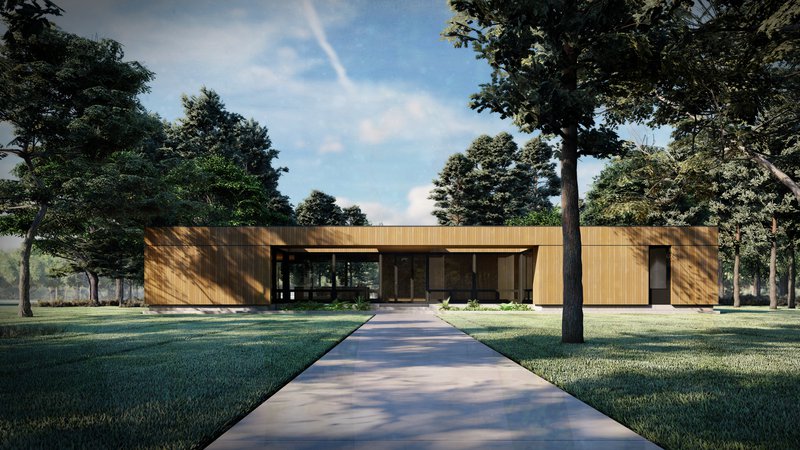
The Main Features of the Minimalist Modern Architecture Style
In light of these cultural, technological, and economic shifts, what were the main features of the modern architectural style of the minimalist era?
Function over Form
Functionality is an inherent feature of modern architectural styles, and in the realm of minimalist architecture, it takes a pivotal role. The idea is not just to create structures that look appealing, but to design spaces that serve clear and practical purposes - Ornamentation for its own sake is seen as superfluous and was largely rejected in favor of cleaner, more purpose driven design.
Simplicity and Clean Lines
The saying "less is more" encapsulates the essence of the minimalist modern architecture style. The modern architectural style favors clean, unbroken lines and simple geometric forms. The Villa Savoye by Le Corbusier is a prime example. With its box-like structure, free-floating façade, and a minimal use of ornamental elements, it exemplifies the power of simplicity in design.
Flexible Design
With rapid urbanization, cities became congested and living spaces were limited. The challenges of urban living demanded that the minimalist modern architectural style create residential designs that could accommodate a variety of functions within limited spaces.
Embracing Technology
The advancement of construction technologies facilitated the advent of many of the main features of modern architectural styles. In particular, materials science played a crucial role.
The introduction of steel-frame construction, for instance, allowed for larger open spaces without the need for obstructive columns. This gave architects the flexibility to design open floor plans, such as the one seen in the Farnsworth House, facilitating a more adaptive use of space.
The invention of triple-pane glass allowed the quintessential feature of modern architecture style - large (often floor to ceiling) windows - to be incorporated into minimalist modern home designs and not just commercial buildings.
Engaging with the Environment
Modern architecture's emphasis on functionality extends beyond the walls of a building. The relationship between the structure and its surrounding environment is equally vital. The aim is to blur the boundaries between the indoor and the outdoor.
Wide, floor-to-ceiling windows, like those seen in the Glass House by Philip Johnson, are commonly employed to offer panoramic views and bring ample natural light, forging a delicate balance between the man-made and the natural. These transparent walls serve a functional purpose by reducing the need for artificial lighting during the day and enhancing thermal efficiency through passive solar heating.
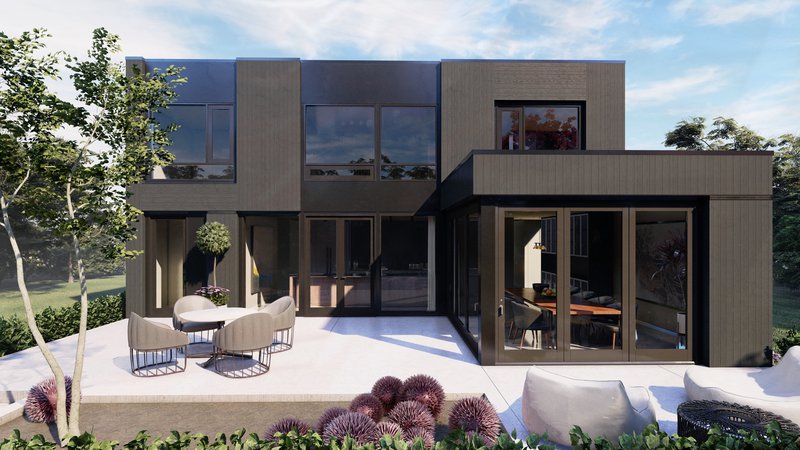
Emphasis on Detail and Precision
While the design features of modern architecture styles may appear simple, they are anything but simplistic. The best modern architecture is characterized by meticulous attention to detail, from the precision of construction seams to the alignment of fixtures. This precision elevates the overall aesthetic, making every element, no matter how minute, a crucial part of the design narrative.
The Human-Centric Approach
Ultimately, the emphasis on functionality as a main feature of modern architecture styles underscores a human-centric approach. It's not about creating buildings that stand as mere artistic statements; it's about designing structures that enhance the quality of life for their inhabitants.
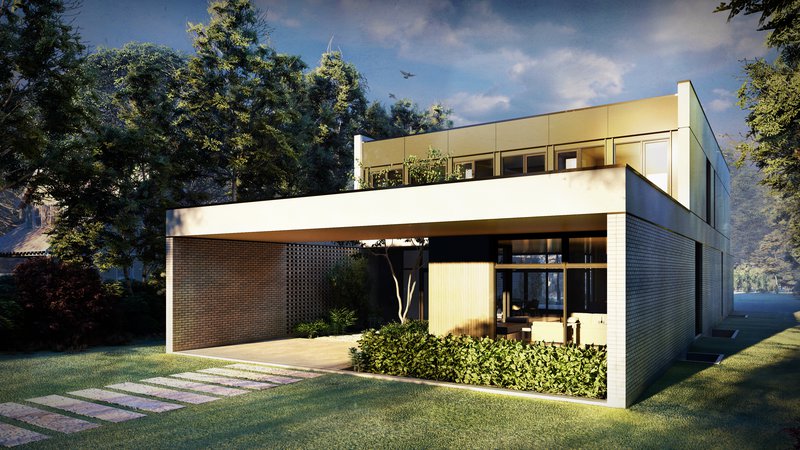
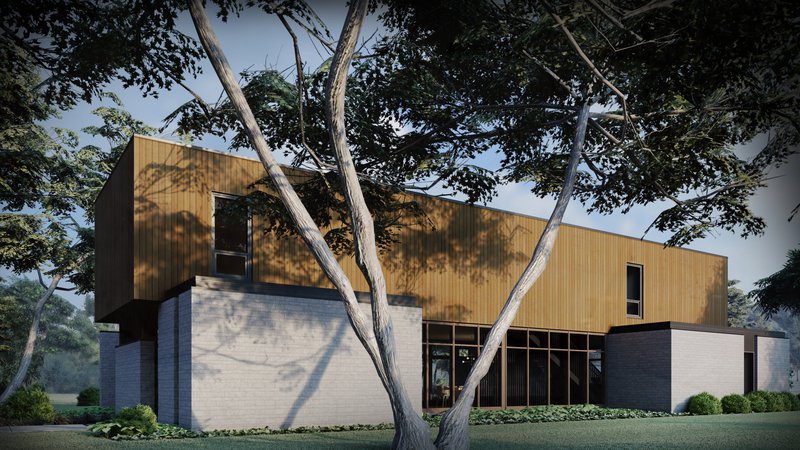
The Main Features of Modern Architectural Styles Today
At the outset of this article, we noted that architecture is a reflection of the societal and cultural norms of a geographical area at a specific point in time. And - of course - culture, society, and technology in North America and Western Europe have continued to evolve and change dramatically over the last century-and- a-half.
Thus, it is not surprising that the style of modern architecture today has evolved from the styles of modern architecture at the advent of the modernist era. What is probably more surprising is that the principal values of the minimalist modern architectural style remain relevant and are largely still reflected in the main features of the modern architectural styles of today, and modernist homes often have a timeless quality to their design.
Flexible Home Design
As was the case with the minimalist modern school of design, flexible design continues to be a key feature of modern architectural styles today. Today, “functional home design” and “flexible home design” are particularly synonymous as families continue to demand homes that meet a functional program that changes with the day, the seasons, and the years!
Sustainable Home Design
Those with an interest in the avant garde are often the first to find ways of incorporating new materials and technology. The incorporation of new building technology was a main feature of the minimalist modern architect movement, and is still a main feature of modern architectural styles today.
Given that architecture tends to reflect social values and norms of a specific time, it is no wonder that an interest in sustainable home design and the adoption and implementation of new building technologies that support sustainable design are a main feature of modern architectural styles today.
Examples include using technologies which capture rainwater for use in yards and as graywater, and a resurgence in courtyard home design, which provides greater passive heating and cooling opportunities than conventional homes.

Clean Lines and Natural Materials
Another main feature of modern architectural styles today is a continued preference for clean lines and natural materials both for interior and exterior application. A feature of modern architectural styles is to choose woods with minimal or subtle grains (like teak) and stone with even or minimal patterning in neutral colors. These applications are calming to the eye, allow clean lines to flow through the home, and tend to be less “trendy” than other materials. Using natural materials, when chosen from renewable sources, is also more sustainable than using man-made materials.
Connecting the Interior and Exterior
It is a feature of modern architectural styles today to incorporate elements within the design that connect interior spaces with exterior spaces. This approach is in keeping with the minimalist modern tradition and has stood the test of time because of the many benefits that the approach offers.
This integration with the surroundings often goes beyond the visual.
Not only does connecting interior and exterior spaces make rooms feel larger than they actually are as the eye can travel beyond exterior walls, but incorporating floor to ceiling windows bathes interior spaces in natural light. Creating connection to the outdoors is also good for mental well-being, and can help to restore or maintain natural circadian rhythms.
Furthermore, homes designed with large, operable windows allow for natural ventilation, taking advantage of wind patterns to cool interiors, eliminating or reducing the need for mechanical air conditioning. Such designs showcase how functionality in modern architecture often intertwines with sustainability.
In addition to incorporating floor to ceiling windows in the design, a feature of modern architectural styles today that achieves this connection of interior and exterior spaces is to continue flooring, wall, or ceiling materials from the interior of the home to the exterior. Stone flooring and walls, or wood ceilings and facia create the illusion of an “invisible wall” and extend the interior of a room to the outdoors very effectively. Such a connection is also yet another way to achieve clean lines in a modern architectural style.
It’s the People that Matter
Probably the most important feature of modern architectural styles today which reflects the minimalist tradition, is that a human-centric approach remains at the core of modern architectural design.
Bringing together all of the main features of modern architectural styles into a modern home design is really about crafting spaces that are not only stunning, but which cater to human needs - both physical and psychological - to improve the day to day life of inhabitants.
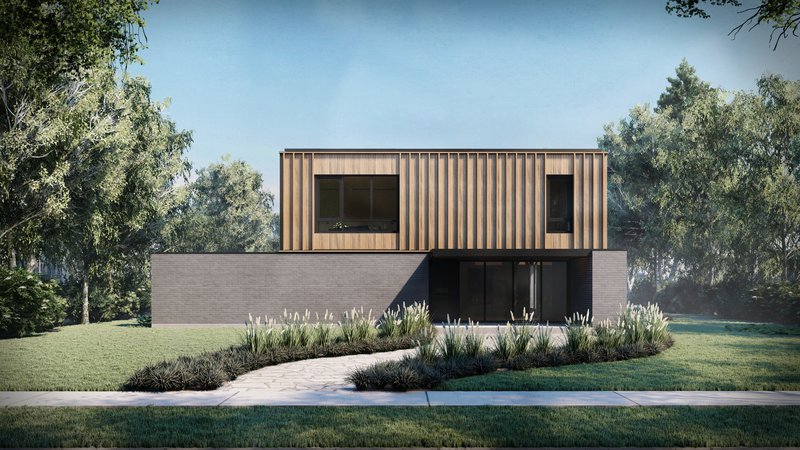
At My Modern Home we strive to incorporate all of these main features of modern architectural styles into our pre-designed home plans. Check them out here!
LET US KNOW WHAT YOU THINK
Love great design?
Want to offer some feedback?
Have an idea for a blog?
Interested in one of our plans, but need more information?
We’d love to hear from you!
DROP US A NOTE
We’re always happy to chat.
